Popular search
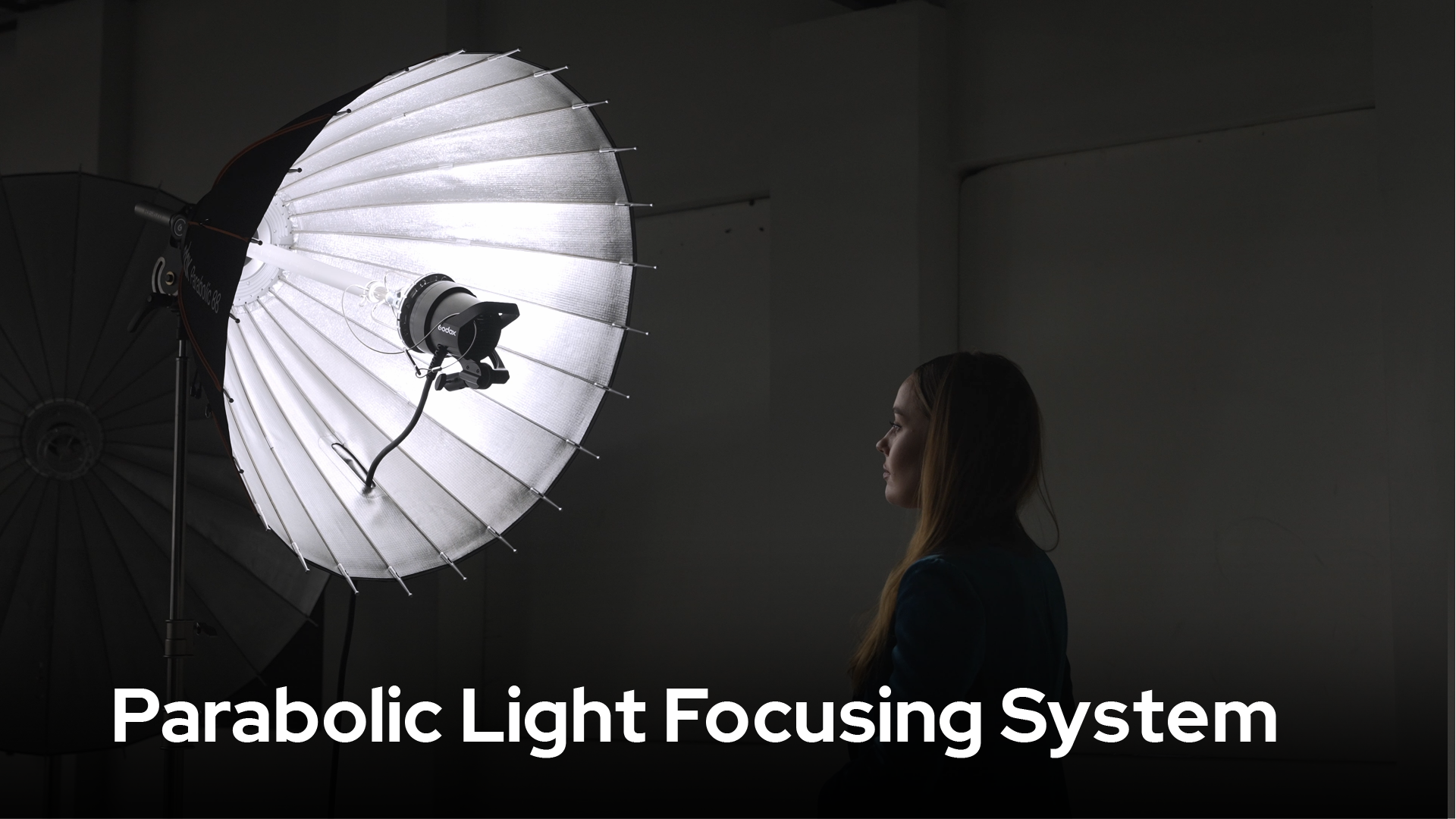
The Sydney photographer Aries Tao shares his experience with Godox Parabolic Light Focusing System. He observes the variability of light performance by focusing and spreading the light, and then interprets how that affects the light effects for portrait.
For demonstration purposes, he showcases the lighting test of para88 and para158 here.
Parabolic Reflector 88 Study
80cm from the model’s forehead
The key feature of Parabolic Light Focusing System is zooming the bulb, it enables photographers to articulate the bulb position at the axis, to get the particular light quality they want.
Around the focus point, the parabola shape reflects the undirectional light into even parallel light beam. The light is restricted into a light ray. On the model’s face the light is directional with more contrast.
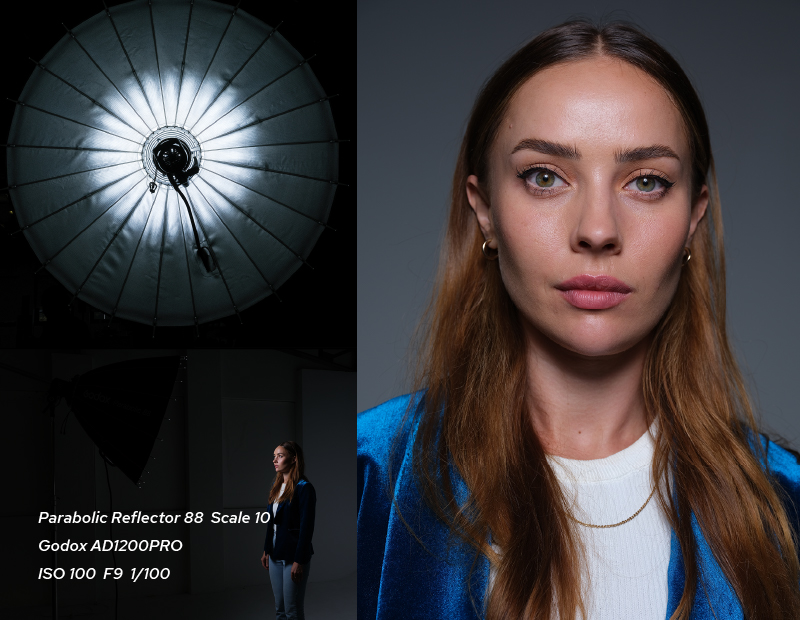
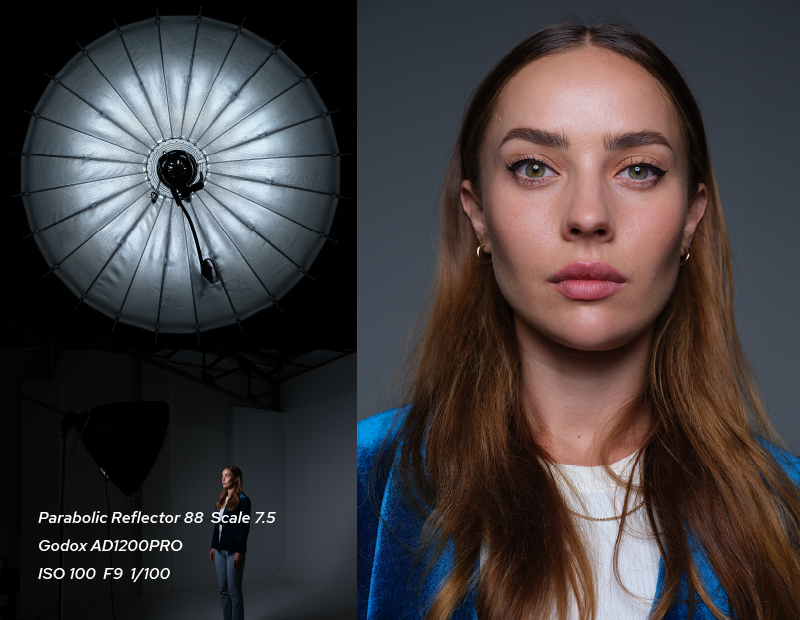
Because the Parabolic Reflector comes with 24 braces, from the model's angle, the reflector is very close to a circle shape. When change into flood position (zoom out), the lights are mostly reflected off the edge of the reflector, the center of the reflector reflects substantially less light. Which acts very much like a giant ring light. The 24 braces reflects the light wrap around the model, gives her a unique 3 dimensional look.
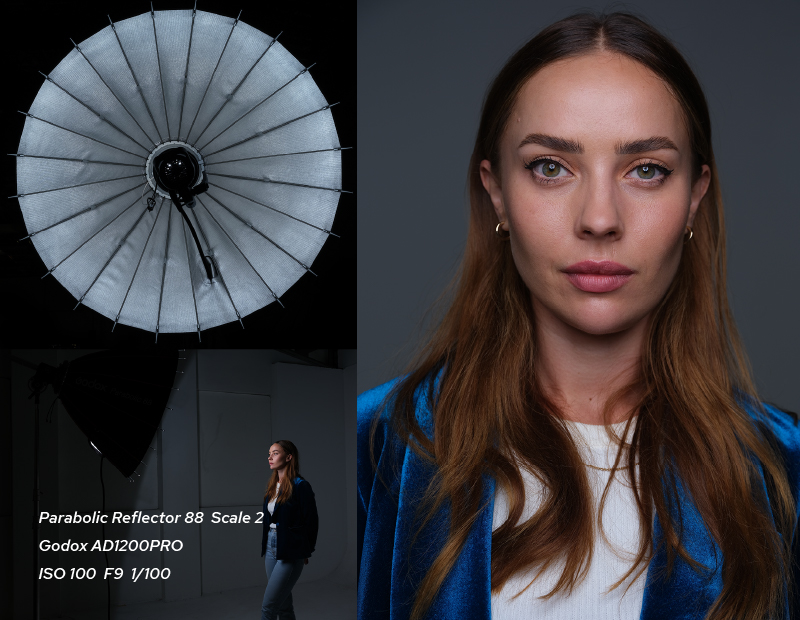
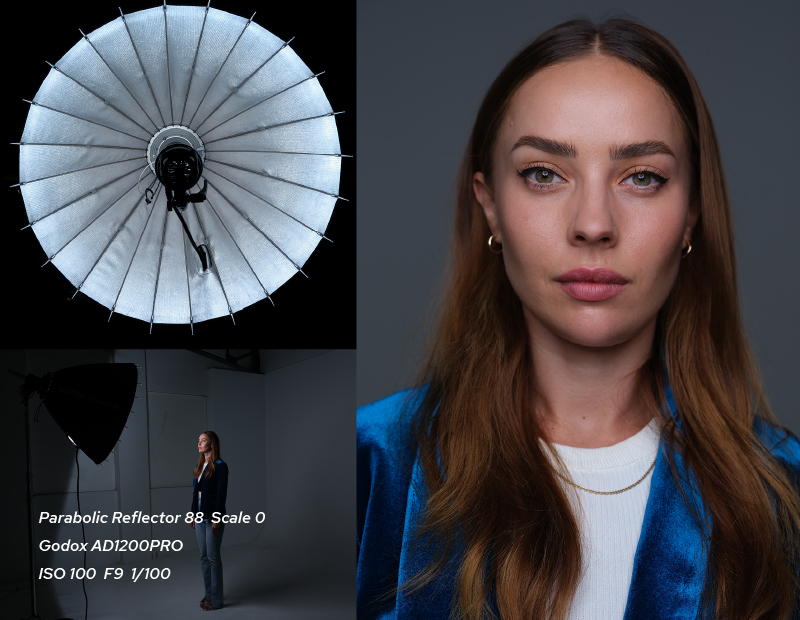
Comparison
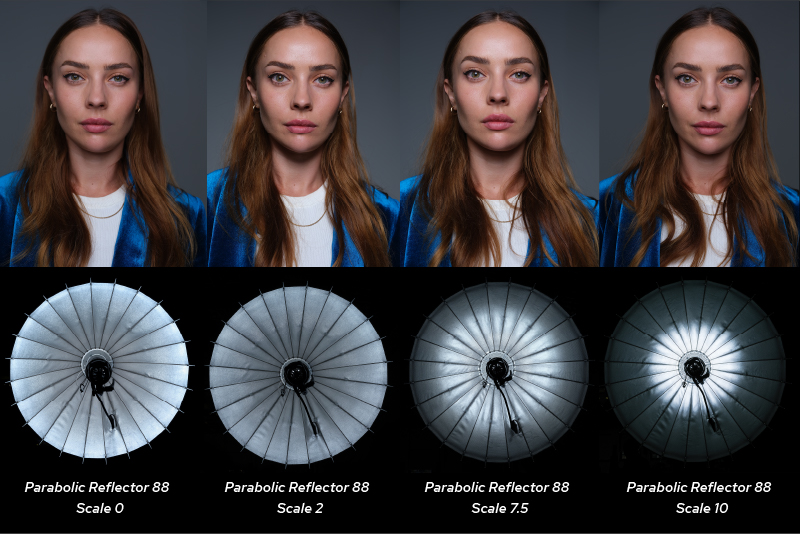
Parabolic Reflector 158 Study
1.5m from the model’s forehead
Now let’s look at para158. Because it’s a larger light source, you can even stand in front of the light because you are only blocking 1-2 out of the 24 braces, the light on the model’s face is approximately the same.
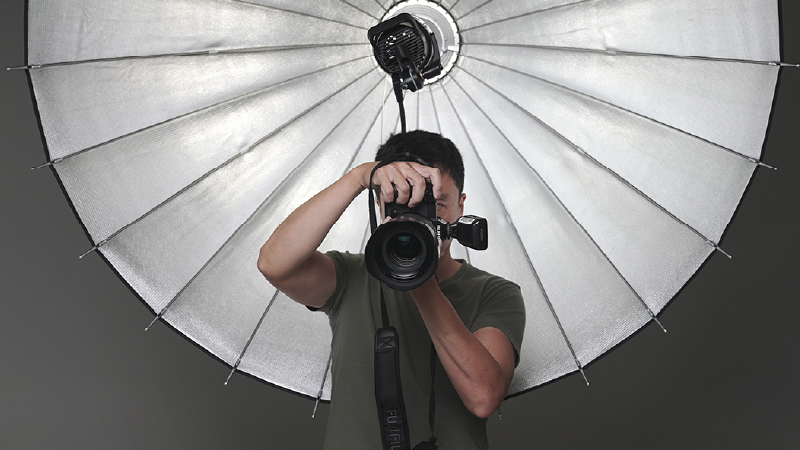
With the bulb at flood position, you can have the wrap-around look even with larger part of body.
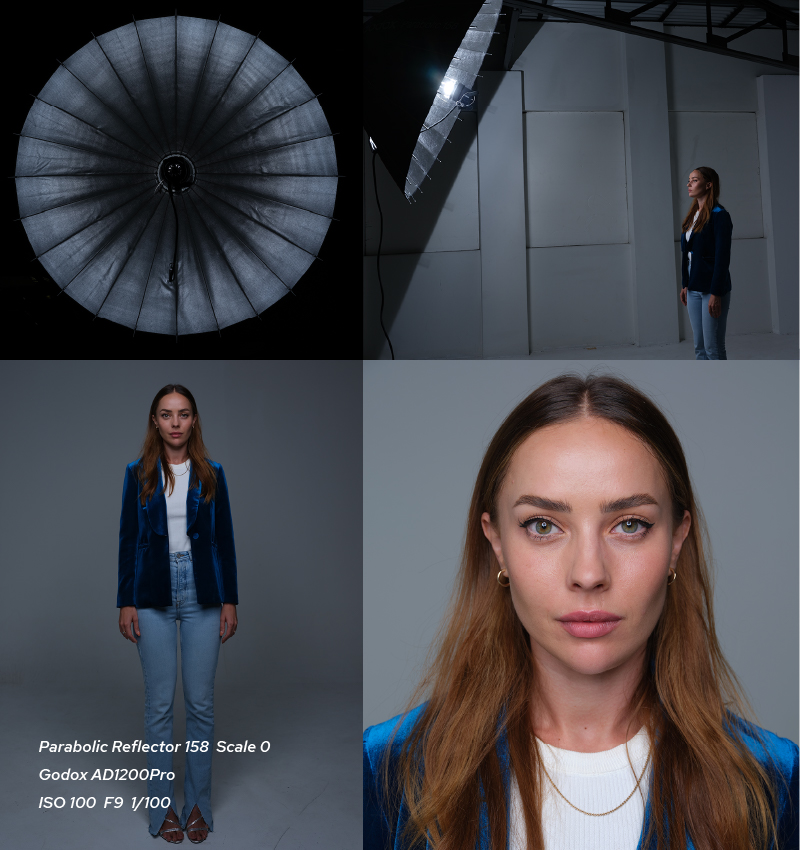
Parabolic Reflector 158 Study
6.7m from the model’s forehead
When you need to place the light further away from the model, to do some movement shoot, you can also change the light back to focus position, so the light will change to focused light ray, evenly illuminating the model’s face and cloths.
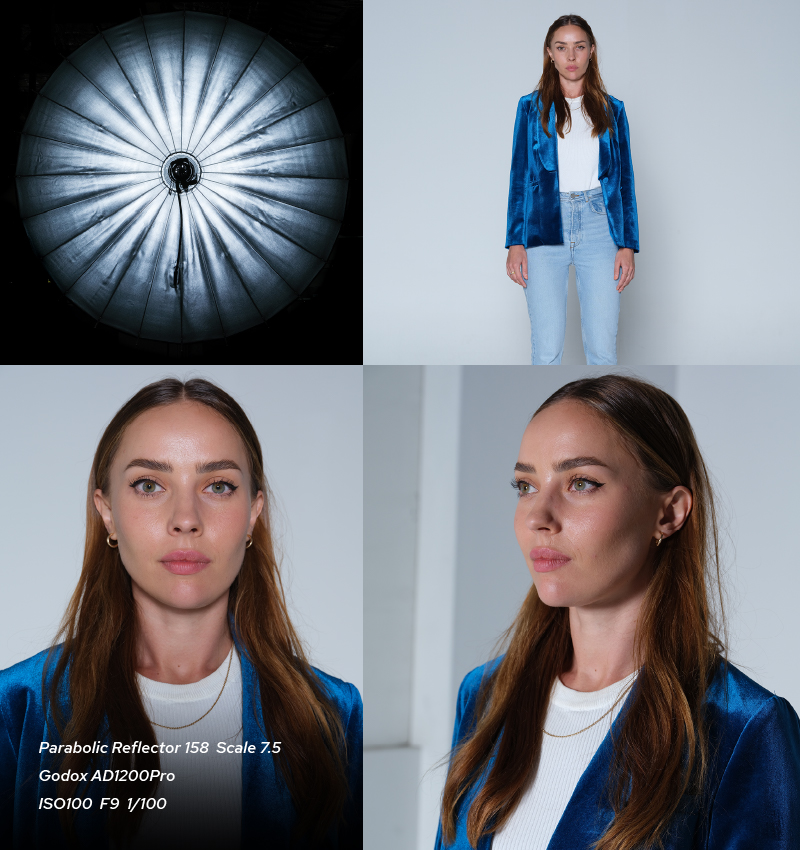
Accessories
Should you want to further limit the light spread for a more dramatic look, grid is available for you.
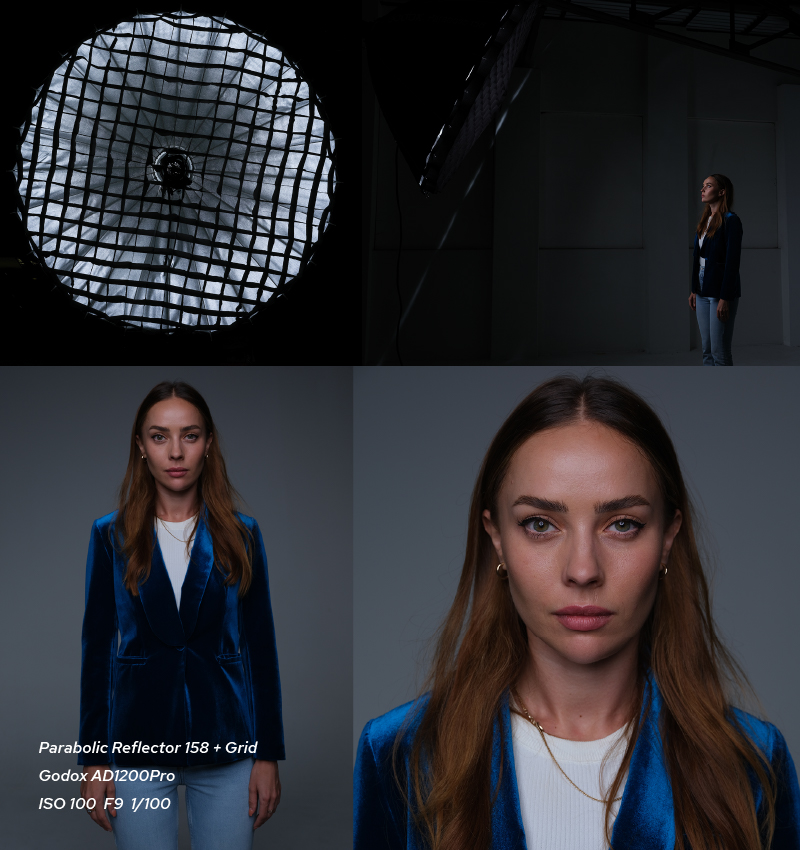
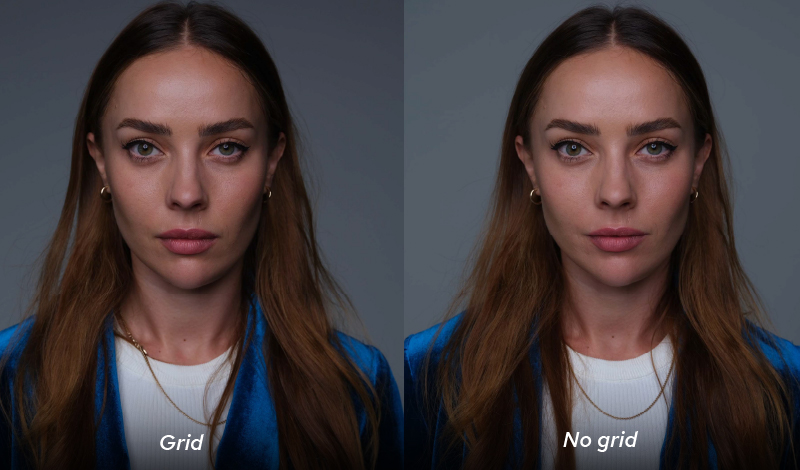
Should you want to further soften the light, Godox offers two diffusion layers for you.
D1 absorbs 0.5 stops of light, minimize the harsh shadow line.
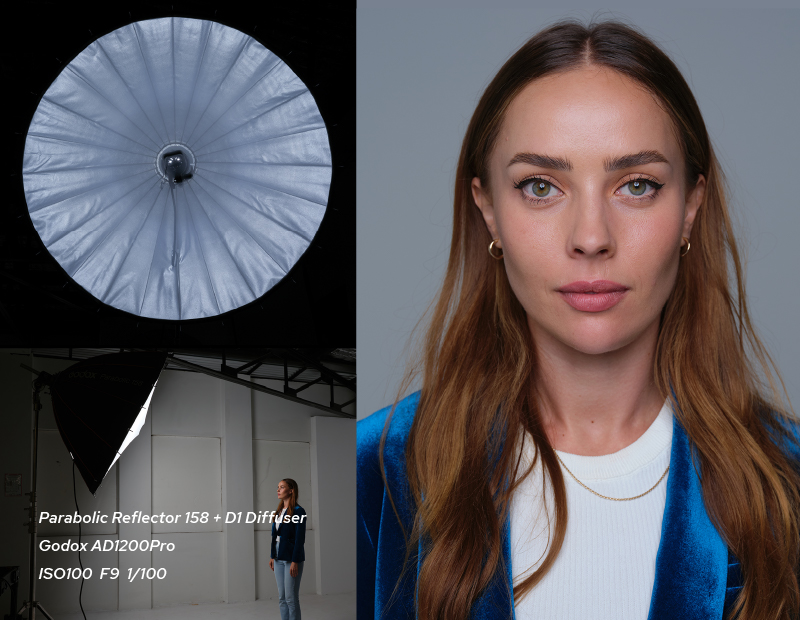
And there is a D2 available if you want to further absorb 0.5 stops of light.
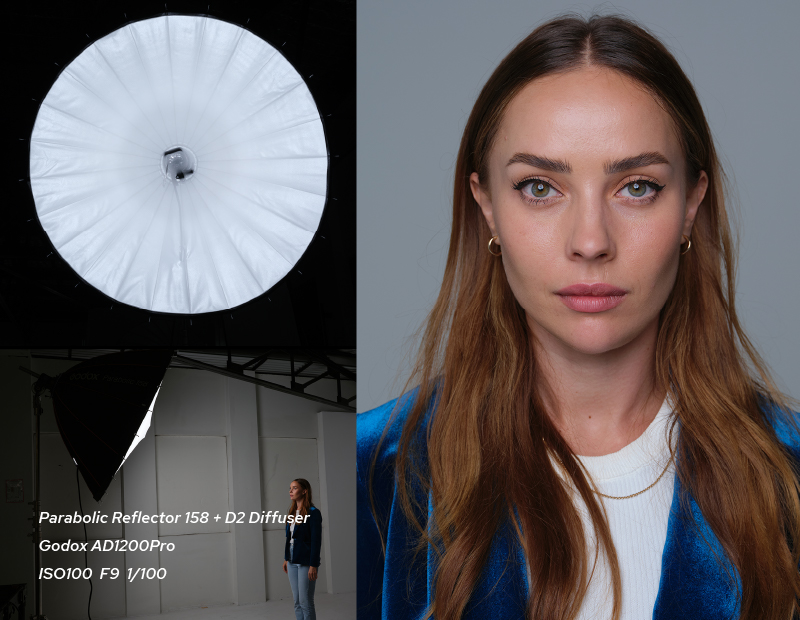

Lighting Tips
The beauty of Godox parabolic focusing system is to customize your light characteristics. By zoom the bulb at a particular position, photographers can customize their own unique recipe of Parabolic Light, and decide how soft they want the light to be, how directional they want the light to be. So the tips here are general based on Aries’ personal experience.
Lighting Tip 1: Flood Position
Place the parabolic reflector relevantly close to your subject, the center axis points right in between the model’s eyes to deliver a symmetric light.

Because one can articulate the light contrast, the Godox parabolic light focusing system minimizes the time on post-production. This is very useful for commercial photographers, who shoot tons of images a day, or any photographer who prefers organic look with minimal retouch.
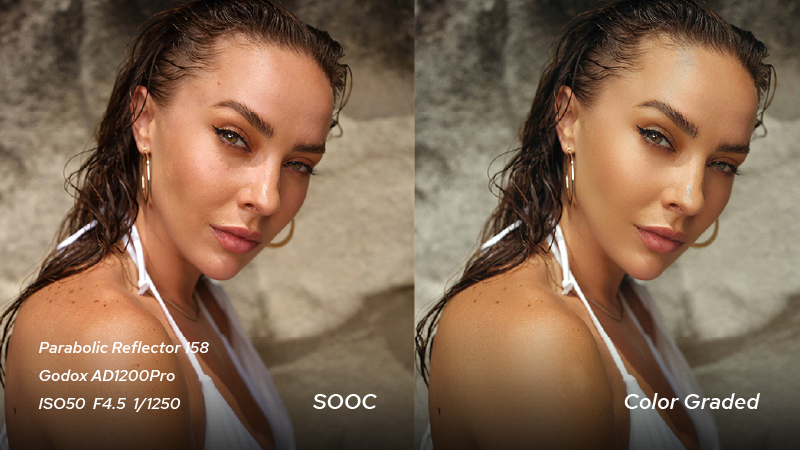
Lighting Tip 2: Zoom Position
Zoom position can be used to illuminate a full body portrait from distance. Directional light would make the texture of the cloth more apparent. Place the light relevant further until the model is fully lite. Make sure the parallel light ray covers from face to toe evenly.
